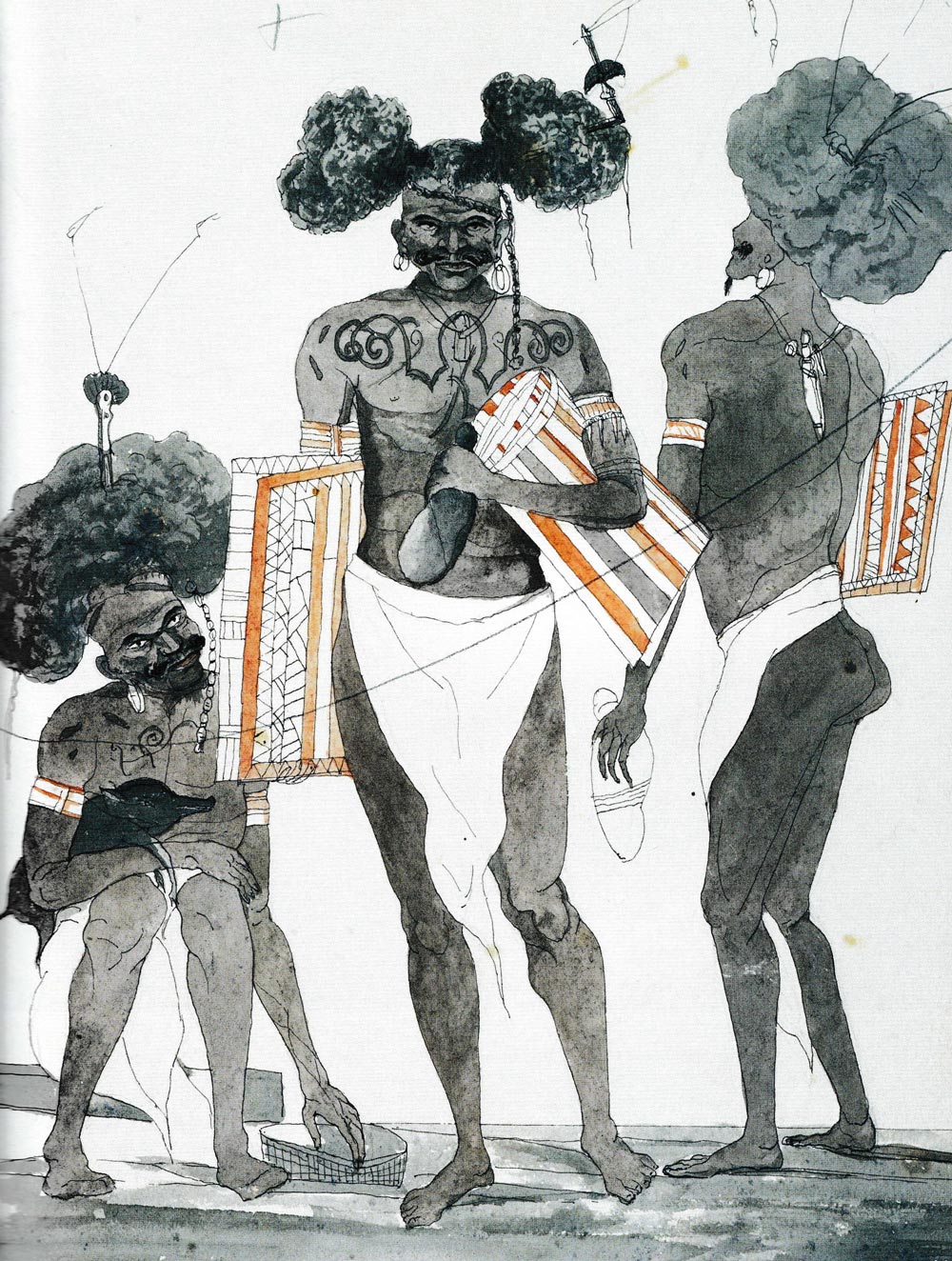Korwar Figure
Biak Island, Cenderawasih Bay,
West Papua
19th c.
Provenance: Adrianus Egbert Willem de Jong (1882-1966) former Dutch East Indies army officer and collector of Indonesian art objects which were largely acquired before his retirement from the military in 1933.
By descent to family member
The present Korwar, a ritual effigy of a deceased person, is unquestionably a very fine example of a style which we can attribute to the southcoast of Biak Island. Whereas the prominent head is angular and rather massive, the body parts, limbs and torso, are rendered in a curving, slender manner, in execution accentuating the confines of a cylinder. The presence of a diminutive figure at the back represents an amulet. According to an early missionary report, (Ottow & Geissler 1857) amulets were worn in the Doreh Bay on the back and tied around the neck by a string. Corbey (2019) illustrates this with a watercolor by Jules-Louis-Lejeune, draftsman on the Duperrey expedition between 1822-24. Apparently, this custom was also found in the Biak area.
Korwar Figure
Biak Island, Cenderawasih Bay,
West Papua
19th c.
Provenance: Adrianus Egbert Willem de Jong (1882-1966) former Dutch East Indies army officer and collector of Indonesian art objects which were largely acquired before his retirement from the military in 1933.
By descent to family member
The present Korwar, a ritual effigy of a deceased person, is unquestionably a very fine example of a style which we can attribute to the southcoast of Biak Island. Whereas the prominent head is angular and rather massive, the body parts, limbs and torso, are rendered in a curving, slender manner, in execution accentuating the confines of a cylinder. The presence of a diminutive figure at the back represents an amulet. According to an early missionary report, (Ottow & Geissler 1857) amulets were worn in the Doreh Bay on the back and tied around the neck by a string. Corbey (2019) illustrates this with a watercolor by Jules-Louis-Lejeune, draftsman on the Duperrey expedition between 1822-24. Apparently, this custom was also found in the Biak area.











